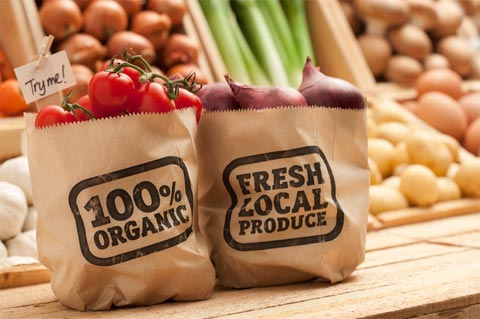Difference between organic and conventional food produces
Posted on: 13/Dec/2017 5:47:09 PM

During last year, there was continued sale of organic products. The overall sales of last year grew up to $30 billion for the very first time. Out of this $29.22 billion are sourced out of organic food and beverages, and about $2.2 billion is produced out or organic non-food products. There was about 9.4 percent growth in organic food sales for the year.
On one hand, there is increasing popularity of organic food products and on the other hand, there are a number of people who still do not have any awareness about organic food or the different between regular and conventional food.
Hence, there are specific requirements that needs to be verified by a third-party certifying agent ahead of labelling the product as organic. In this, there is no use of pesticides, herbicides, irradiation, sewage, antibiotics, genetic engineering, etc.
First of all, organic operations need to demonstrate that they preserve natural resources and biodiversity.
Say, farmers who make use of conventional methods of may make use of synthetic chemical fertilizers for catalyzing plant growth. In case of organic farmers, they would make use of natural fertilizers as manure and feed the soil and plants naturally. While the conventional farmers will make use of insecticides to control pests, the organic counterparts would utilize beneficial insects, traps, birds, etc.
Conventional farmers may make use of herbicides for weed control, but organic farmers would keep rotating crops they grow until the dirt and they will hand-weed for managing the weeds.
Likewise, products such as organic beef, pork, and poultry, different other kinds of meat products, etc. are produced using rotational grazing, wholesome diet, clean housing, etc. On the other hand, in conventional methods, the animals are given spur growth and antibiotics for preventing diseases in them.
When exposed to pesticides, there are several health risks associated with it. This is one such need for finding the difference between organic food and conventional food. There are several EPA-approved pesticides that have got registered before linking it to cancer or diseases. As of now, more than 50 percent of the herbicides or fungicides are tagged as potentially cancer causing.
While looking to identify the differences between organic and conventional produces in food items, the nutritional value is another factor we consider. According to a number of studies, organic foods contain more nutrition content, especially they are rich in organic aids and polyphenolic compounds that altogether have a lot of health benefits such as antioxidants. There are however a number of other findings that contradict with this research. In general, the researchers agree to such study results and they are inconclusive. They add that furthermore research is required in the same.
Price tag is one of the elements shoppers rely on. The buyers depend on these tags to identify difference between organic and conventional food items. You however need to keep in mind that the price mentioned in the price tag is not the true cost of food. There are many other aspects involved in food production. This includes
The total amount we pay towards water bills for covering all agricultural chemical residues in drinking water
Total cost of health care pertaining to illness caused out of food
The total price we pay as tax for subsidizing large farming operations, and for funding government agencies to work towards protecting wildlife and repair their habitats.
The term organic or natural has not got any specific meaning. It rather means a couple of different things. Generally, natural foods are free from artificial colors, flavors, sweeteners, preservatives, and so on. So, as you find the tag called organic on any product that you buy, you can understand that the product is grown as per the strict standards.







